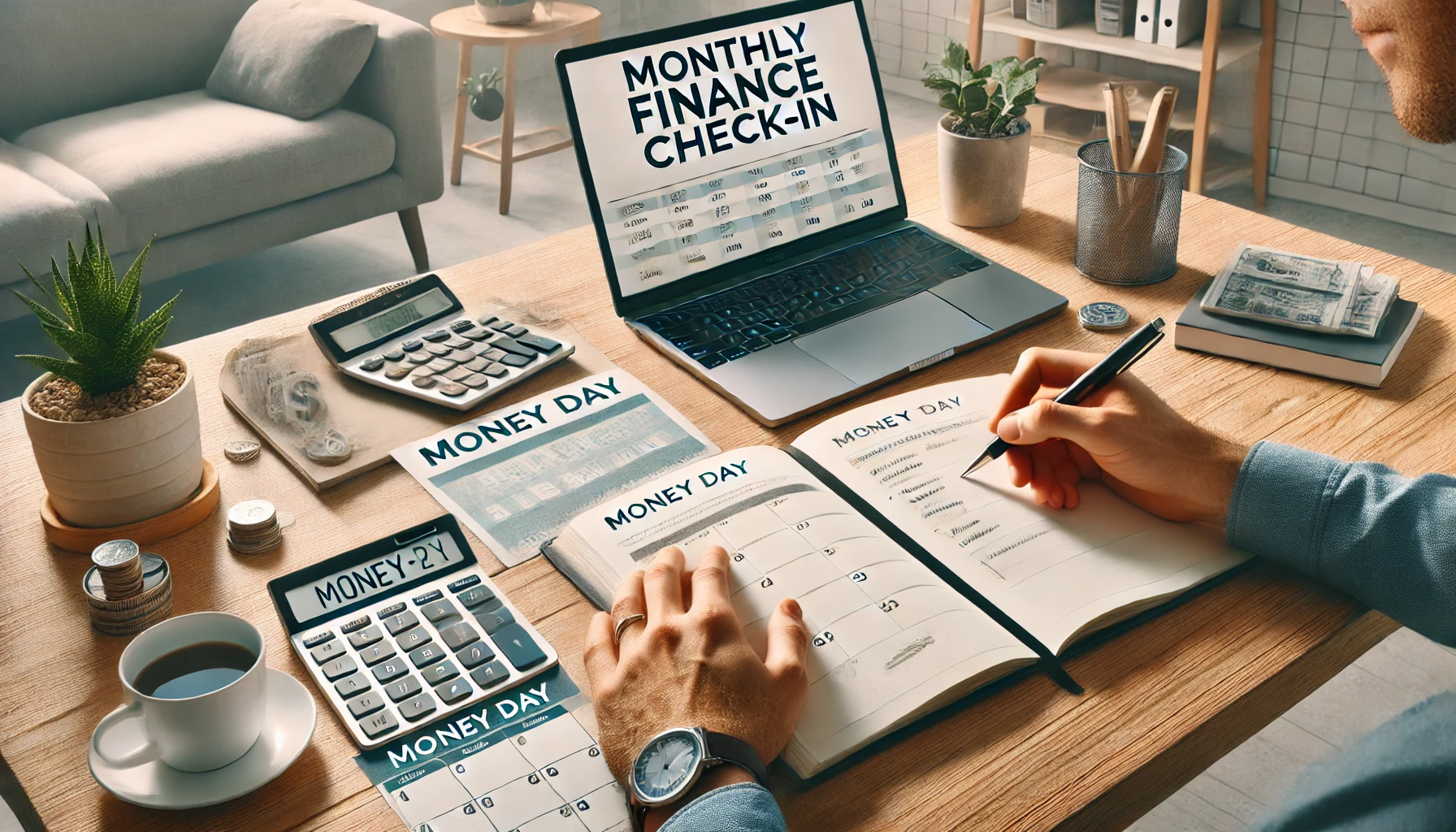Managing money shouldn’t feel overwhelming. With a simple monthly routine, you can stay on top of your finances, track progress, and build long-term wealth. The key is consistency—small financial habits, done regularly, lead to big results.
In this guide, you’ll learn how to set up a monthly money routine that helps you stay financially organized and stress-free.
Step 1: Set a Fixed “Money Day” Every Month
📌 Why It’s Important:
✔ Helps you stay consistent with financial check-ins.
✔ Prevents missed payments, forgotten goals, or overspending.
✔ Keeps you in control of your income, expenses, and savings.
📌 What to Do on Your Monthly Money Day:
✔ Review your budget and spending from last month.
✔ Pay any bills or debt payments due soon.
✔ Check savings and investments progress.
💡 Pick a date that works for you—like the 1st or last day of every month!
Step 2: Review Your Spending and Adjust Your Budget
📌 How to Track and Adjust Your Budget:
✔ Use a budgeting app (Mint, YNAB, Empower) or spreadsheet.
✔ Compare planned vs. actual spending—where did you overspend?
✔ Adjust budget categories for savings, debt payments, and investments.
💡 A flexible budget helps you adapt without feeling restricted!
Step 3: Check Your Bank Accounts and Automate Your Savings
📌 Monthly Account Check-Up:
✔ Review bank balances to ensure no errors or fraud.
✔ Automate savings transfers to reach financial goals faster.
✔ Adjust savings contributions if your income changes.
💡 Automation removes the temptation to spend instead of save!
Step 4: Review Debt and Make Extra Payments If Possible
📌 How to Stay on Track with Debt Payoff:
✔ Check loan balances and interest rates.
✔ Make at least one extra payment toward debt if possible.
✔ Consider refinancing if it lowers interest rates.
💡 The faster you pay off debt, the more money you have for savings and investments!
Step 5: Monitor Your Investments and Retirement Accounts
📌 How to Stay on Track with Investing:
✔ Check your 401(k), IRA, or brokerage account performance.
✔ Adjust contributions if needed (increase with salary raises).
✔ Rebalance your portfolio if market conditions change.
💡 Consistent investing builds long-term wealth, even in small amounts!
Step 6: Plan for Upcoming Expenses and Goals
📌 Things to Prepare For Monthly:
✔ Birthdays, holidays, or seasonal expenses.
✔ Annual bills (insurance, subscriptions, property taxes).
✔ Future savings goals (vacation, home purchase, business investment).
💡 Planning ahead prevents financial surprises and keeps your budget in check!
Final Thoughts: Build a Strong Monthly Money Habit!
📌 Action Steps:
✅ Choose a set day each month for a financial check-in.
✅ Review your budget, spending, and savings progress.
✅ Automate savings and debt payments for consistency.
✅ Monitor investments and upcoming expenses.
By following this simple routine, you’ll feel more in control of your finances and make steady progress toward financial freedom! 🚀

